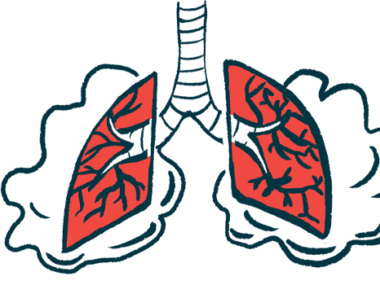Pulmonary Rehabilitation Eases Symptoms, Improves Quality of Life
Written by |

Pulmonary rehabilitation programs can ease shortness of breath, and improve exercise capacity and quality of life in people with chronic obstructive pulmonary disease (COPD), according to a recent meta-analysis.
Additionally, the study revealed that mind-body exercises, such as tai chi and yoga, can significantly improve lung function in these patients.
“Our study verifies known effects of the traditional PR [pulmonary rehabilitation programs],” the researchers said, but also shows “that yoga and tai chi can have significant improvement and may have benefit in [lung capacity measurements] which PR does not do.”
The study, “Effect of pulmonary rehabilitation in patients with chronic obstructive pulmonary disease: a systematic review and meta-analysis of randomized controlled trials,” was published in the journal Annals of Medicine.
COPD is a progressive, chronic disease characterized by persistent respiratory symptoms and airflow limitations. People with COPD often undergo pulmonary rehabilitation as part of their treatment plan. Such rehabilitation programs are often personalized and implemented according to patients’ individual needs, to improve their quality of life and exercise endurance, and to ease shortness of breath.
“Compared to the traditional community care, pulmonary rehabilitation reduces [shortness of breath] and fatigue and improves exercise endurance and many areas of health-related quality of life (HRQOL),” the researchers wrote.
These rehabilitation programs also have been shown to reduce disease complications, increase social participation, and lower medical costs.
Previous analyses have looked at the effects of pulmonary rehabilitation on COPD patients. However, they did not include mind-body exercises, like yoga and tai chi, in calculating the results.
This meta-analysis — a study that combines data from previous research — focused on evaluating the efficacy of using such measures, including yoga and tai chi, for COPD patients.
Investigators included 39 studies of pulmonary rehabilitation programs involving 2,397 patients with COPD from around the world, published between 1999 and 2020.
The analysis revealed the distance walked in the 6-minute walk test (6MWT) — a walking test often used to assess exercise capacity in COPD patients — was significantly improved in patients who underwent pulmonary rehabilitation, as compared with those who did not.
When the 6MWT results were broken down by subgroup, there was a significant improvement in patients who practiced yoga, tai chi, and conventional exercises.
Numerous studies reported patient scores on the St. George respiratory questionnaire (SGRQ) — a questionnaire designed to evaluate the impact of obstructive airway disease on patients’ health-related quality of life. These 25 studies showed that such rehabilitation significantly improved patients’ SGRQ scores, indicating an improvement in health-related quality of life.
Subgroup analysis showed that conventional exercises led to a significant improvement in SGQR scores, whereas yoga and tai chi practice did not.
Shortness of breath also was significantly eased in patients who had pulmonary rehabilitation, according to data from the 11 studies that evaluated patients’ modified British Medical Research Council questionnaire scale scores.
Forced expiratory volume in one second or FEV1, a lung function parameter that measures how much air a person can forcibly exhale in one second — a test of lung capacity — was assessed in 18 studies. Pulmonary rehabilitation programs allowed for significant changes in FEV1% predicted value. However, when broken down by subgroup, a significant improvement in FEV1% was only seen with yoga and tai chi, and not with conventional exercises.
“This meta-analysis confirmed that Yoga and Tai Chi have significantly improved the FEV1% predicted value. The pulmonary rehabilitation program improves the exercise capacity, the quality of life, and [eases shortness of breath] in patients with COPD,” the researchers wrote.
“However, additional studies on large datasets and well-designed models are required to substantiate these findings,” they wrote.






